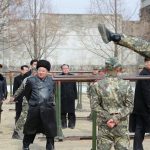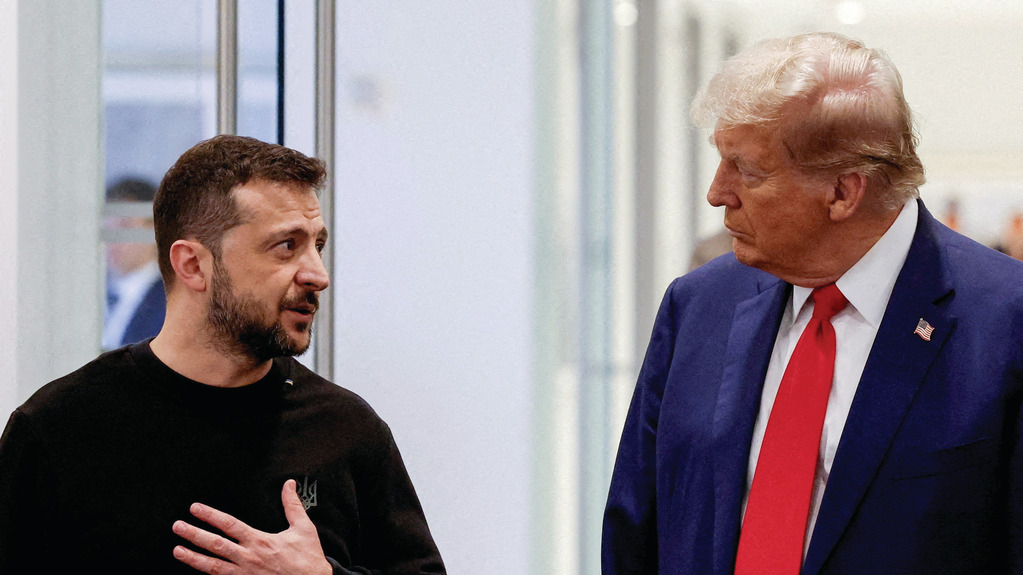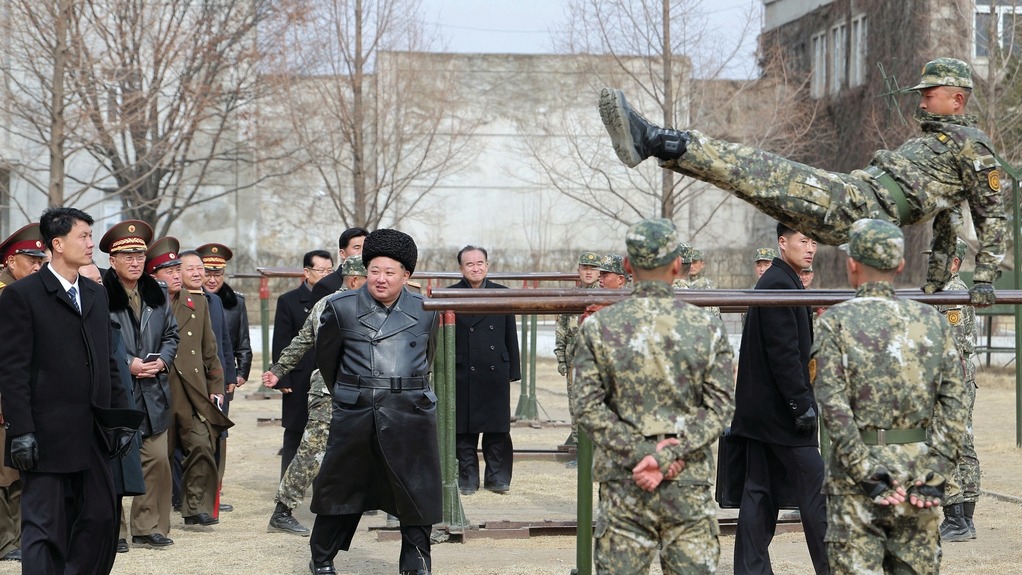## Analysis of Trump’s Stance on Ukraine Joining NATO and Maintaining Sanctions Against Russia
Introduction
The ongoing conflict between Russia and Ukraine has been a focal point of international diplomacy, with various nations and leaders playing significant roles in shaping the trajectory of the war. Recently, U.S. President Donald Trump has expressed skepticism about Ukraine’s potential membership in NATO, while also emphasizing the need for a negotiated peace settlement. This stance has significant implications for both Ukraine and the broader geopolitical landscape.
Trump’s Position on NATO Membership for Ukraine
President Trump has made it clear that he does not support Ukraine’s membership in NATO, a stance that aligns with Russia’s long-standing opposition to such a move. This position is reflected in comments by U.S. Defense Secretary Pete Hegseth, who stated that NATO membership for Ukraine is “unrealistic” and that Ukraine should focus on a negotiated peace rather than territorial restoration[1][3]. Trump’s refusal to offer security guarantees or NATO membership to Ukraine is seen as a concession to Russia, potentially weakening Ukraine’s bargaining position in any future negotiations[2][3].
Implications for Ukraine
– Territorial Integrity: Trump’s administration suggests that Ukraine should abandon hopes of regaining all its territory, including areas annexed by Russia. This stance could lead to a negotiated settlement that does not fully restore Ukraine’s pre-2014 borders[1][3].
– Security Guarantees: The U.S. is pushing for European nations to take on more responsibility for providing security guarantees to Ukraine, rather than offering direct U.S. involvement. This could result in a peacekeeping force without U.S. troops, which might not have the same deterrent effect as a NATO-backed force[1][3].
Economic and Diplomatic Considerations
– Economic Pressure: The U.S. has been a significant provider of military aid to Ukraine, but Trump’s administration is now emphasizing the need for Europe to assume more financial and military responsibilities. This shift could impact the scale and nature of future aid packages[1].
– Diplomatic Efforts: Trump has initiated talks with Russian President Vladimir Putin, aiming to end the conflict. However, the extent to which Ukraine will be involved in these negotiations remains unclear, raising concerns about Ukraine’s role in shaping its own future[1][3].
Sanctions Against Russia
While Trump’s stance on NATO membership and territorial integrity has been controversial, maintaining sanctions against Russia remains a critical aspect of international pressure to end the conflict. The U.S. and European allies have imposed significant economic sanctions on Russia, which are seen as a key tool in forcing Russia to negotiate a peace deal[1][3].
Conclusion
Trump’s strategy on Ukraine reflects a complex interplay of diplomatic, economic, and military considerations. By ruling out NATO membership and emphasizing European responsibility for security guarantees, the U.S. is adopting a stance that could have profound implications for Ukraine’s future and the broader balance of power in Europe.
—
Detailed Report
#
Executive Summary
The Trump administration’s approach to the Russia-Ukraine conflict involves skepticism about Ukraine’s NATO membership and a push for a negotiated peace settlement. This stance includes urging Ukraine to abandon hopes of regaining all its territory and relying on European nations for security guarantees. The implications of this strategy are multifaceted, affecting both Ukraine’s territorial integrity and its long-term security.
#
Key Points
1. NATO Membership: Trump has ruled out supporting Ukraine’s bid to join NATO, aligning with Russia’s opposition to such a move[2][3].
2. Territorial Integrity: The administration suggests Ukraine should focus on a negotiated peace rather than restoring its pre-2014 borders[1][3].
3. Security Guarantees: The U.S. is pushing for Europe to take on more responsibility for providing security guarantees to Ukraine[1][3].
4. Economic and Diplomatic Efforts: Trump has initiated talks with Putin, while emphasizing Europe’s role in supporting Ukraine financially and militarily[1][3].
#
Implications and Future Directions
– Ukraine’s Position: Ukraine faces significant challenges in negotiating a favorable peace deal without strong international backing for its territorial claims.
– International Relations: The U.S. stance could strain relations with European allies who support Ukraine’s NATO aspirations and territorial integrity.
– Sanctions and Economic Pressure: Maintaining sanctions against Russia remains crucial in pressuring Moscow to negotiate a peace deal.
#
Conclusion
The Trump administration’s strategy on Ukraine reflects a complex geopolitical landscape. As negotiations unfold, the implications of this stance will be closely watched, particularly in terms of Ukraine’s future security and territorial integrity.
—
References
[1] [Los Angeles Times: Trump administration voices doubt about Ukraine joining NATO](https://www.latimes.com/world-nation/story/2025-02-12/hegseth-trump-ukraine-nato-membership)
[2] [Dawn: Trump refuses security guarantees, Nato membership for Ukraine](https://www.dawn.com/news/1894537/trump-refuses-security-guarantees-nato-membership-for-ukraine)
[3] [Atlantic Council: What to make of the unfolding Trump strategy on Ukraine](https://www.atlanticcouncil.org/blogs/new-atlanticist/trump-strategy-on-ukraine-hegseth/)
Related sources:
[1] www.latimes.com
[2] www.dawn.com











